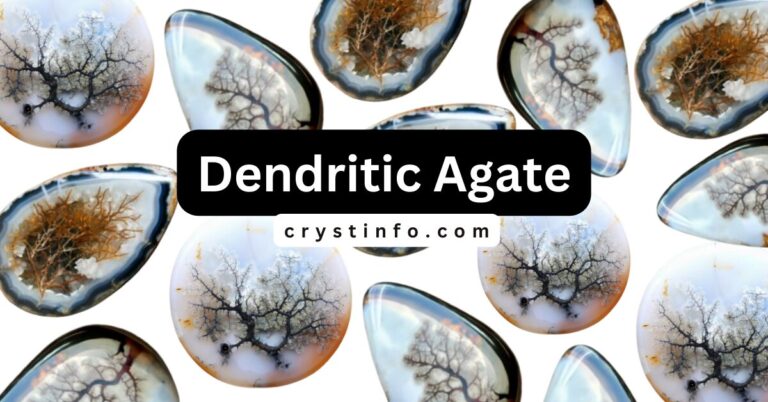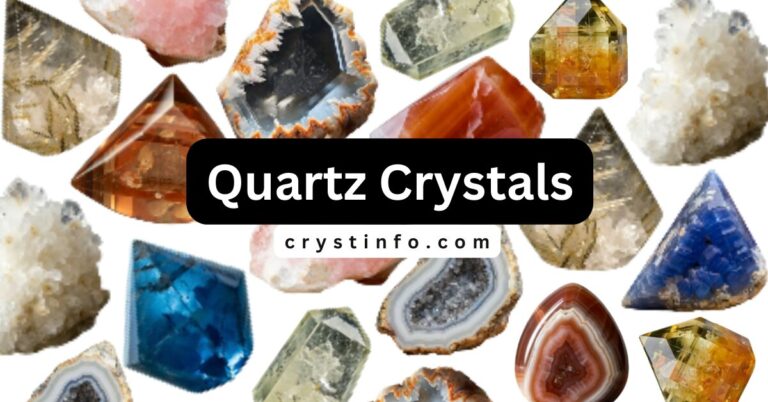Chakras: Navigating the Energy Wheels for Balance
What are Chakras?
Chakras are important energy centers in the body where spiritual energies converge, according to Buddhism and Hinduism. According to a 2019 overview on the history of chakras, the Sanskrit word “chakra,” which means “wheel” in English, represents these centers as dynamic, spinning wheels or discs.
- Chakra System Overview:
- Energy Centers: Chakras are energy centers in the body.
- Spinning Wheels: Metaphorically, they are often described as spinning wheels.
- Energy Channels:
- Connection Between Points: Chakra is linked by energy channels.
- Facilitate Flow of Energy: These channels facilitate the seamless flow of energy between different points in the body.
- Concept in Hinduism:
- Tangible Physical Body and Subtle Body: Early Hindu notions involve both a tangible physical body and a subtle body.
- Composition of Subtle Body: The subtle body includes the mind and emotions and is composed of invisible energy.
- Interplay of Spiritual and Physical:
- Dominance of Energy: Spiritual or psychic energy from the subtle body influences the physical body, and vice versa.
- Impact on Overall Well-being: The condition of an individual’s chakras is crucial in shaping their overall health and well-being.
History:
- Ancient Origins in India:
- Vedic Mention: Chakra have their roots in India and were first mentioned in the Vedas.
- Vedic Texts: Vedas, ancient yogic and spiritual texts, contain references to chakras.
- Timeframe: The concept dates back between 500 and 1500 BCE, with some scholars suggesting an even earlier origin.
- Link to Yoga and Ayurveda:
- Integral to Yoga: The chakra system is closely linked to the practice and teachings of yoga.
- Connection with Ayurveda: It is also associated with Ayurveda, an ancient traditional medicine system.
- Observation and Intuitive Knowledge:
- Vedic Way of Life: The Vedic way of life was shaped by observation and intuitive knowledge.
- Microcosm and Macrocosm Connection: Ancient peoples, according to Shankar, had a profound understanding of the connection between the microcosm (individual body) and macrocosm (universe), including stars, planets, and the nadis/chakras in the body.
What is the origin of chakra?
- Earliest Record in Vedas:
- Source of Chakra Concept: The earliest written record of chakra is found in the Vedas.
- Ancient Indian Texts: Vedas are ancient Indian texts outlining the philosophy of yoga.
- Thousands of Years Old: While the precise age of the Vedas is unknown, they are considered to be thousands of years old.
- Evolution of Chakra Concept:
- Influence on Traditions: Over time, the concept of chakra evolved, influencing Hindu, Buddhist traditions, and healing therapies.
- Integral to Tantra: Chakra is integral to a set of beliefs known collectively as Tantra.
- European Spiritualists and Occultists:
- Introduction to the West: In the early 20th century, European spiritualists and occultists started writing books about Tantra, including chakras.
- Foundation of Western Understanding: These writings became the foundation for the Western understanding of chakra today.
- Association with Colors of the Rainbow:
- 20th Century Influence: The association between chakra and the colors of the rainbow emerged in the 20th century.
- Extended Associations: Chakra is now associated with various elements like metals, astrological signs, foods, herbs, crystals, minerals, and tarot cards.
- Western Chakra System:
- Influence on New Age Practices: The Western chakra system, influenced by these developments, has impacted New Age alternative health practices like crystal healing and homeopathy.
Chakra and Health:
Chakra believers contend that an individual’s health may be jeopardized by imbalances in their chakras. For instance, a navel chakra imbalance may have an impact on one’s capacity to control emotions or their ability to digest food.
- Ayurvedic Medicine:
- Dietary and Lifestyle Recommendations: Ayurvedic medicine utilizes chakra principles, offering recommendations on diet and lifestyle.
- Yoga Practices:
- Specific Yoga Positions: Yoga incorporates specific positions (asanas) aimed at promoting the flow of energy in the chakra.
- Meditation Techniques:
- Visualization in Meditation: Meditation techniques often involve visualizations to unblock and balance the chakra.
- Reiki Energy Healing:
- Chakra Alignment in Reiki: Reiki, a form of energy healing, focuses on chakra alignment and balancing.
These practices are diverse but share the common goal of aligning and balancing the chakra to promote overall well-being and spiritual harmony.
What does the science say about chakra?
There isn’t any scientific proof that chakras exist in a spiritual sense. But some scientists, especially in the nervous system, have claimed that they correlate to actual bodily parts.
- Nervous System Connection:
- Central Nervous System: The primary chakra align with the spine and may correspond to the central nervous system, which includes the brain and spinal column.
- Nerve Plexuses:
- Plexuses along the Spine: Nerve bundles (plexuses) along the spine connect to various areas of the body, potentially corresponding to different chakra.
- Cadaver Study Insights:
- Root Chakra and Hypogastric Plexus: A 2017 cadaver study suggests a connection between the root chakra and the inferior hypogastric plexus, which influences reproductive organs and the rectum.
- Scientific Understanding:
- Mirror to Human Body: The chakra system’s alignment may mirror the scientific understanding of the human body, although interpretations vary, and more research is needed.
This connection between chakra and the nervous system provides a potential bridge between ancient spiritual practices and modern anatomical knowledge.
Do chakra-based therapies work?
Since chakra-based therapies focus on chakra, there isn’t enough proof to say that they are effective. Many people do, however, experience advantages from using them.
Due to the paucity of experimental research on the topic, it is challenging to determine why this is the case. Though few studies genuinely demonstrate the efficacy of chakra-based therapies, many highlight their benefits.
- 2021 Study on Chakra:
- Acupuncture Clinic Study: A 2021 study assessed chakra in people undergoing acupuncture treatment, revealing that 89% had no energy on their chakra meridians.
- Not Related to COVID-19: The study did not investigate the effectiveness of chakra-based therapies for preventing or treating COVID-19. Participants had various unrelated symptoms like anxiety, back pain, and knee pain.
- Perceived Benefits in Western Medicine:
- Relaxation and Well-Being: Chakra-based therapies may be popular in Western medicine due to perceived benefits such as supporting relaxation and promoting a sense of well-being.
While these practices may offer subjective benefits in terms of relaxation and well-being, their efficacy in treating specific medical conditions or preventing diseases like COVID-19 remains a topic of debate and further research.
What Is a Blocked Chakra?
A chakra that is in balance allows energy to flow freely through the body. Unbalance can result from impediments to this free energy flow, which can come from a variety of sources, including experiences, lifestyle choices, and physical surroundings. When a chakra is blocked, imbalances can show up on the body and the emotional levels.
| Chakra System and Responses | Description |
|---|---|
| Response to Stress/Trauma | The chakra system mirrors the body’s fight, flight, or freeze response during non-life-affirming events. Affected chakra intensify activity to resolve issues, resembling increased rotation and energy. |
| Post-Traumatic Responses | After a stressful event, chakra may show increased activity, but prolonged excessive rotation can deplete them, leading to slowed or blocked energy flow. Ideal chakra function involves balanced flow. |
| Physical Manifestations of Imbalance | Lack of flow within the chakra can manifest as physical sensations like heaviness, discomfort, numbness, or pain. Pain in specific areas may correspond to dysfunctional life aspects. |
| Emotions Stored in the Body | Emotions are stored in the body, and unresolved emotional patterns may negatively impact life, draining energy from the nervous system and chakra. Recognizing discomfort as an opportunity for growth is vital. |
| Holistic Perspective on Well-being | Understanding the chakra provides a holistic perspective on the interconnectedness of the physical, emotional, and energetic body, serving as a valuable component of one’s inner guidance system. |
How can you unblock a chakra?
- Yoga for Chakra Balance:
- Root Chakra (Muladhara):
- Pose: Tadasana (Mountain Pose)
- Benefits: Grounding, stability, and connection to the Earth.
- Sacral Chakra (Svadhisthana):
- Pose: Bhujangasana (Cobra Pose)
- Benefits: Enhances creativity and balances emotions.
- Solar Plexus Chakra (Manipura):
- Pose: Navasana (Boat Pose)
- Benefits: Strengthens core, boosts confidence, and personal power.
- Heart Chakra (Anahata):
- Pose: Ustrasana (Camel Pose)
- Benefits: Opens the heart, promotes love, and compassion.
- Throat Chakra (Vishuddha):
- Pose: Sarvangasana (Shoulder Stand)
- Benefits: Strengthens the throat and encourages communication.
- Third Eye Chakra (Ajna):
- Pose: Balasana (Child’s Pose)
- Benefits: Enhances intuition and inner wisdom.
- Crown Chakra (Sahasrara):
- Pose: Padmasana (Lotus Pose)
- Benefits: Connects with higher consciousness and spiritual awakening.
- Root Chakra (Muladhara):
Practicing these yoga poses can help align and balance the energy flow within each corresponding chakra.
The seven chakras:

| Chakra | Location | Influence/Purpose |
|---|---|---|
| Muladhara | Bottom of the spine | Basic urges of sex, food, sleep, and self-preservation. |
| Svadhisthana | Pelvis | Regulation of emotions and desires. |
| Manipura | Below the navel | Aids digestion and the ability to process life’s experiences. |
| Anahata | Heart | Connection with unconditional love. |
| Vishuddha | Throat | Authenticity and personal expression. |
| Ajna | Between the eyebrows | Seat of inner knowledge and consciousness. |
| Sahasrara | Just above the top of the head | Promotes a more enlightened approach to the world. |
Root Chakra (Muladhara):
The root chakra, or Muladhara, stands for our base. It provides us with a sense of grounding and is located at the base of the spine in the human body.
When the root chakra is open, we have faith in our capacity to overcome obstacles and support ourselves. We experience a sense of threat and unsteadiness when it is blocked.

| Root Chakra Information | Details |
|---|---|
| Location | Base of the spine, in the tailbone area |
| Controls | Survival issues such as financial independence, money, and food |
| Mantra | “I can’t grow from an unsteady foundation.” |
| Color | Red |
| Element | Earth |
| Stone | Hematite |
| Yoga Pose | Warrior I |
| Development Age | 1-7 years old |
| Attributes | – Stability – Strength – Security – Grounding |
| Potential Blockage Effects | – Apathy – Anger – Pessimism – Overthinking – Feeling unable to take action |
Sacral Chakra (Swadhisthana):
The sacral chakra, also known as the Swadhisthana, influences how we respond to our own emotions as well as those of others. It also controls sexual arousal and creativity. A blocked sacral chakra may cause a person to feel powerless over their life.
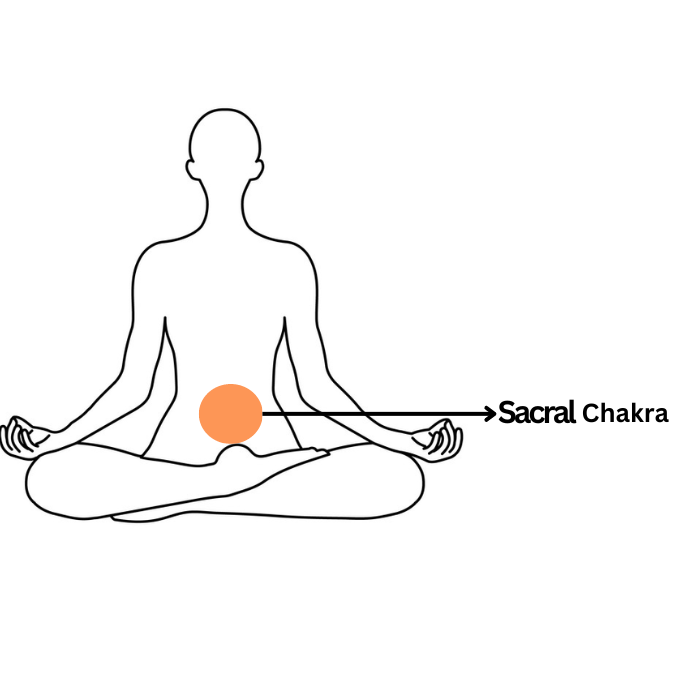
| Sacral Chakra Information | Details |
|---|---|
| Location | Lower abdomen, about 2 inches below the navel |
| Controls | Your sense of abundance, well-being, pleasure, and sexuality |
| Mantra | “I always honor others but not before myself.” |
| Color | Orange |
| Element | Water |
| Stone | Tiger’s Eye |
| Yoga Pose | Bound Angle Pose |
| Development Age | 8-14 years old |
| Associated Attributes | – Creation – Emotion – Inspiration – Imagination – Joy |
| Potential Blockage Effects | – Numbness – Detachment – Anxiety – Isolation – Loneliness |
Solar Plexus Chakra (Manipura):
The solar plexus chakra, the third chakra, represents your capacity for self-assurance and life control. The Manipura chakra is active when you experience butterflies or a pit in your stomach, so consider that experience.
If the solar plexus chakra is blocked, extreme guilt and self-doubt may overwhelm you. Sacral chakra openers are liberated to express who they really are.
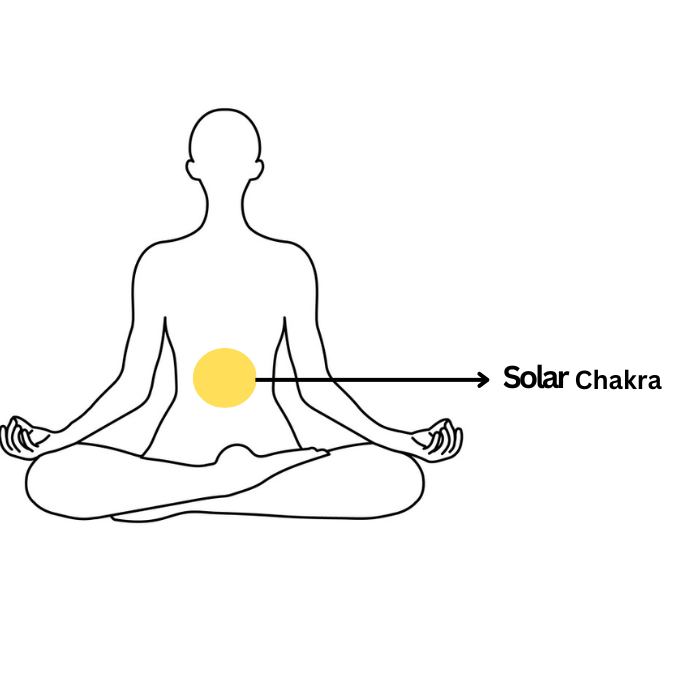
| Sacral Chakra Information | Details |
|---|---|
| Location | Lower abdomen, about 2 inches below the navel |
| Controls | Your sense of abundance, well-being, pleasure, and sexuality |
| Mantra | “I always honor others but not before myself.” |
| Color | Orange |
| Element | Water |
| Stone | Tiger’s Eye |
| Yoga Pose | Bound Angle Pose |
| Development Age | 15-21 years old |
| Associated Attributes | – Creation – Emotion – Inspiration – Imagination – Joy |
| Potential Blockage Effects | – Numbness – Detachment – Anxiety – Isolation – Loneliness |
Heart Chakra (Anahata):
The connection between the upper chakras, which are connected to spirituality, and the lower chakras, which are connected to materiality, is made by the anhata, or heart chakra. This chakra can affect our capacity to give and receive love—from both ourselves and other people—as its name implies.
It will be difficult for someone to fully open up to the people in their life if their heart chakra is blocked. Someone can feel intense empathy and compassion if their heart is open.
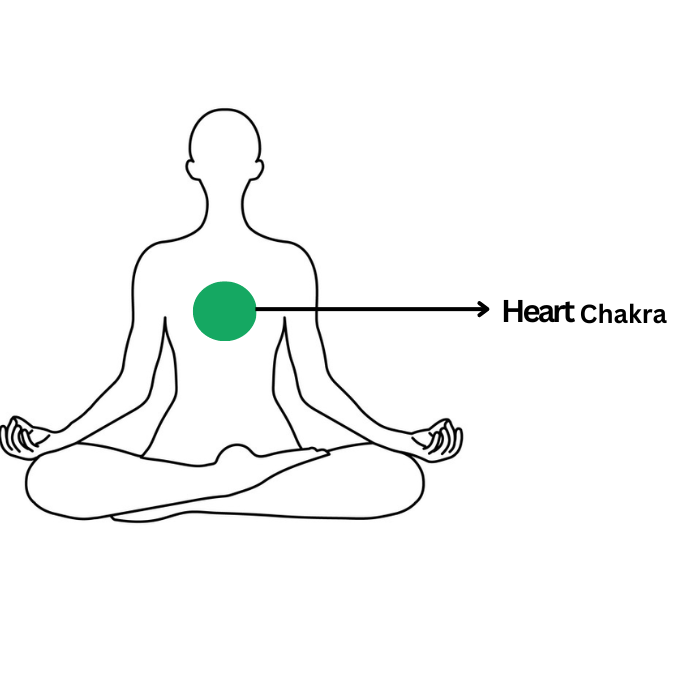
| Heart Chakra Information | Details |
|---|---|
| Location | Center of the chest, just above the heart |
| Controls | Love, joy, and inner peace |
| Mantra | “When I love myself, loving others comes easily.” |
| Color | Green |
| Element | Air |
| Stone | Rose Quartz |
| Yoga Pose | Camel Pose |
| Development Age | 22-28 years old |
| Associated Attributes | – Unconditional love – Connection – Ability to give and receive love – Self-acceptance – Healthy boundaries |
| Potential Imbalance Effects | – Feelings of unworthiness – Relationship struggles – Fear of rejection – Difficulty accepting yourself – Codependency – Jealousy |
Throat Chakra (Vishuddha):
The throat chakra, also known as the Vishuddha, governs our capacity to express our inner strength and gives voice to the heart chakra.
When it’s working at its best, it enables us to communicate authentically and effectively. When the throat chakra is blocked, a person may feel as though they are unable to express their true feelings.
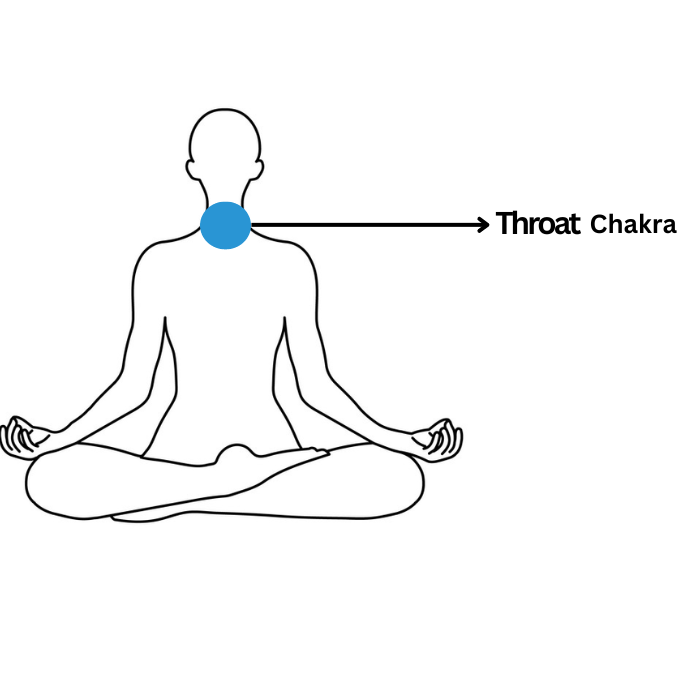
| Throat Chakra Information | Details |
|---|---|
| Location | Throat |
| Controls | Communication, self-expression, and truth |
| Mantra | “I speak my truth, always.” |
| Color | Light Blue/Turquoise |
| Element | Sound/Music |
| Stone | Aquamarine |
| Yoga Pose | Fish Pose |
| Development Age | 29-35 years old |
| Associated Attributes | – Self-expression – Communication – Sharing – Mouth, tongue, and throat |
| Potential Imbalance Effects | – Inability to express thoughts and feelings – Fear of speaking – Avoiding difficult conversations – Social anxiety and avoidance |
Third-Eye Chakra (Ajna):
We are drawing nearer to divine communion as we ascend the body. The Anja, also known as the third-eye chakra, governs our capacity for intuition and broad perspective. Consider it the soul’s eye, registering details that are visible above the surface.
A person with an open third-eye chakra frequently experiences visions and intuitive hits.
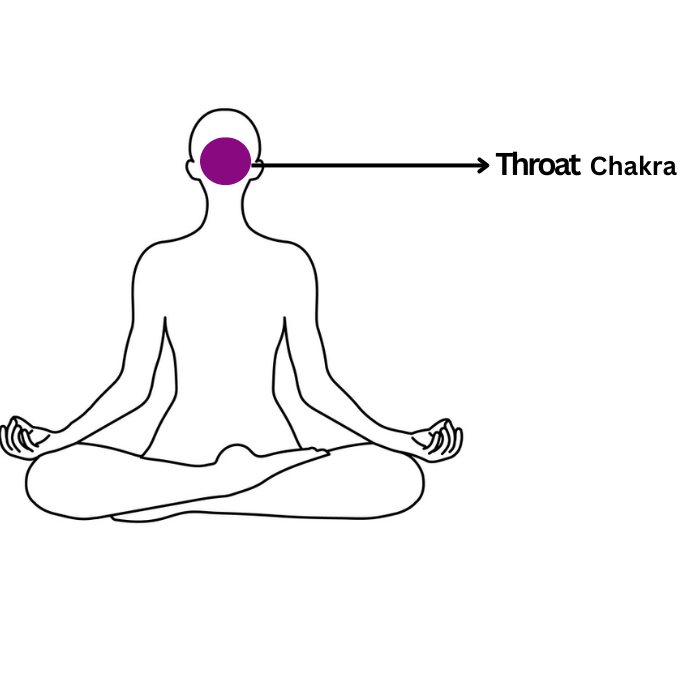
| Third Eye Chakra Information | Details |
|---|---|
| Location | Forehead between the eyes (also called the Brow Chakra) |
| Controls | Intuition, imagination, and wisdom |
| Mantra | “I am open to exploring what cannot be seen.” |
| Color | Dark Blue/Purple |
| Element | Light |
| Stone | Amethyst |
| Yoga Pose | Child’s Pose |
| Development Age | 36-42 years old |
| Associated Attributes | – Imagination – Intuition – Spiritual clarity – Spiritual connection |
| Potential Imbalance Effects | – Insecurity – Indecision – Inability to understand – Overthinking – Worry |
Crown Chakra (Sahasrara):
The highest chakra, the Sahasrara, or crown chakra, is located at the top of the head and symbolizes our capacity for complete spiritual connection. You may reach a higher consciousness when you completely open your crown chakra, which is something that very few people ever accomplish.
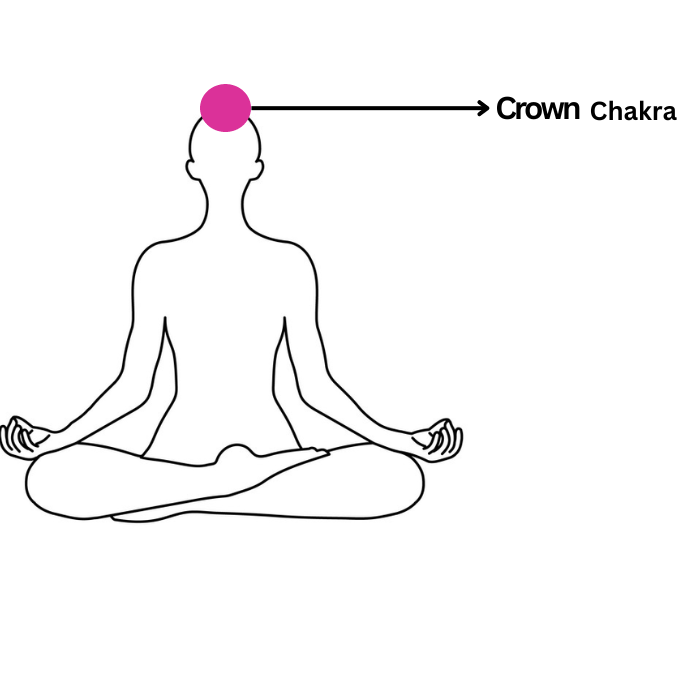
| Crown Chakra Information | Details |
|---|---|
| Location | The very top of the head |
| Controls | Inner and outer beauty, spiritual connection |
| Mantra | “I am a vessel for love and light.” |
| Color | Violet/White |
| Element | Divine Consciousness |
| Stone | Clear quartz |
| Yoga Pose | Headstand |
| Development Age | 43-49 years old |
| Associated Attributes | – Seeing the bigger picture – Understanding – Awakening – Trust – Oneness |
| Potential Imbalance Effects | – Taking things personally – Expressing negativity or a victim mentality – Lack of spiritual connection – Short-sightedness |
Development Age for chakras:
Stress and chakra:
- Stress and Chakra:
- Root Chakra (Muladhara):
- Effect: Stress related to survival, financial instability, or basic needs may impact the root chakra.
- Symptoms: Feeling ungrounded, anxious, or insecure.
- Sacral Chakra (Svadhisthana):
- Effect: Emotional stress, especially related to relationships or creativity, can affect the sacral chakra.
- Symptoms: Emotional imbalance, creativity blocks.
- Solar Plexus Chakra (Manipura):
- Effect: Stress related to personal power, control, or self-esteem may impact the solar plexus chakra.
- Symptoms: Low self-esteem, lack of confidence.
- Heart Chakra (Anahata):
- Effect: Emotional stress, particularly related to love and relationships, can affect the heart chakra.
- Symptoms: Difficulty in giving or receiving love, emotional pain.
- Throat Chakra (Vishuddha):
- Effect: Stress related to communication, self-expression, or feeling unheard may impact the throat chakra.
- Symptoms: Communication issues, fear of expressing oneself.
- Third Eye Chakra (Ajna):
- Effect: Stress related to intuition, perception, or spiritual matters may impact the third eye chakra.
- Symptoms: Lack of clarity, difficulty making decisions.
- Crown Chakra (Sahasrara):
- Effect: Stress related to purpose, meaning, or spiritual connection may impact the crown chakra.
- Symptoms: Feeling disconnected, lack of spiritual fulfillment.
- Root Chakra (Muladhara):
Addressing stress and maintaining chakra balance through practices like meditation, yoga, and energy healing can contribute to overall well-being.
Panic attacks and chakra:
- Panic Attacks and Chakra:
- Root Chakra (Muladhara):
- Connection: Linked to the adrenal medulla, part of the adrenal gland involved in the fight-or-flight response.
- Effect: Panic attacks inducing feelings of unsafety and fear for one’s life can shut down the root chakra.
- Consequence: Blocks energy movement from the root chakra through the body.
- Domino Effect:
- Consequence: The blockage in the root chakra may initiate a domino effect, impacting other chakras in the energy system.
- Result: Other chakras may become blocked, contributing to an overall imbalance.
- Root Chakra (Muladhara):
Addressing panic attacks and their impact on the root chakra, possibly through practices that promote a sense of safety and calmness, could be beneficial for overall chakra balance.
Chakra practices for anxiety:
| Chakra Practices for Anxiety | Details |
|---|---|
| Starting Point | Begin with the root chakra, as it is the gateway to other chakra. Establish balance, particularly through outdoor activities, connecting to the earth for a rooted feeling. |
| Meditation Outdoors | Meditate outdoors with crystals like red jasper, heliotrope, and obsidian, which align with the root chakra to alleviate anxiety. |
| Chakra-Balancing Exercises | – Breathwork – Mind-body exercises (e.g., yoga or tai chi) – Energy healing practices (e.g., reiki or acupuncture) |
| Heart/Solar Plexus Breathing | 1. Rub hands together until warm. 2. Place one hand on heart chakra and another on solar plexus chakra. 3. Direct breath to these areas. 4. Continue for desired duration. |
| Third Eye Pressure Point | 1. Press a finger into the middle of brows (third eye chakra location). 2. Apply continuous pressure while focusing on breath. 3. Continue for desired duration. |
| Throat-Soothing Crystal Energy | 1. Hold a blue lace agate crystal to the throat chakra. 2. Allow soothing energy to envelop you. 3. Visualize pale blue expanding from the crystal to every cell of your body. 4. Continue. |
| Rooting Exercise | 1. Place an obsidian crystal at the root chakra. 2. Imagine growing roots from feet deep into the earth. 3. Embrace the strength and wisdom of a large oak tree. 4. Continue. |
How to use chakra affirmations?
Chakra affirmations can be incorporated into your life in a variety of ways. You can use them in your prayers, as well as in your meditation practice and recording listening.However, don’t expect trumpeting angels and parting clouds.
Winquist says, “There are times when the changes in our consciousness are subtle.”Journaling your affirmations and your reactions to them is something she advises.According to Winquist, there are times when you’ll notice that you’re reacting to someone or a circumstance in a healthier way.
To become more conscious of your actions and to reaffirm the affirmation, you can write this down in your journal.
Root chakra affirmations:
| Root Chakra | Aspects and Links | Shadow Issues | Affirmations |
|---|---|---|---|
| Root Chakra | – Strength – Safety – Grounding – Community – Nourishment – Stability | – Aggression – Indecision – Anxiety – Insecurity – Greed – Attachment – Fear | – I am healthy and vibrant. – I am deeply and safely connected to my body and the Earth. – I feel the ground firmly beneath my feet. – I honor the temple of my body with deep care and reverence. – I’m open to life’s opportunities. – I am committed to fulfilling my life’s purpose. |
Sacral chakra affirmations:
| Sacral Chakra | Aspects and Links | Imbalances | Affirmations |
|---|---|---|---|
| Sacral Chakra | – Creativity – Sensuality – Sexuality – Pleasure – Emotions – Intimacy | – Overindulgence – Codependence – Lack of sexual desire – Feeling numb – Disconnection | – I accept the flow of life. – I use my energy for creative expression. – I’m free to express my emotions in a healthy way. – I honor my sensual expression. – I am an empowered sexual being. – My creativity flows effortlessly. |
Solar plexus affirmations:
| Solar Plexus Chakra | Aspects and Links | Imbalances | Affirmations |
|---|---|---|---|
| Solar Plexus Chakra | – Personal power – Mental abilities – Decision-making – Self-discipline – Influence | – Feelings of helplessness – Unhealthy need to control – Acting obsessively – Lacking clear direction – Low self-esteem | – I am decisive. – I make clear choices. – I take healthy risks. – I commit to my direction in life. – I am open to possibilities. – I am empowered to live my best life. |
Heart chakra affirmations:
| Heart Chakra | Aspects and Links | Imbalances | Affirmations |
|---|---|---|---|
| Heart Chakra | – Love – Beauty – Compassion – Transformation – Connection – Relationships | – Fear of intimacy – Defensiveness – Jealousy – Antisocial behavior – Holding grudges – Guilt and shame | – My heart is open to give and receive love. – I feel compassion for myself and others. – I am a conduit for love and peace. – I am full of gratitude for my ability to love. – My heart is full of unconditional love for all beings. |
Throat chakra affirmations:
| Throat Chakra | Aspects and Links | Imbalances | Affirmations |
|---|---|---|---|
| Throat Chakra | – Communication – Self-expression – Honesty – Speech – Truth – Clarity | – Inability to speak your truth – Telling lies – Difficulty communicating – Lack of purpose in life – Lack of creative expression | – I listen to my own inner knowing. – I speak my truth. – I let my voice be heard. – I trust my conviction and act on my truth. – I do no harm with my words. – I speak with authenticity, grace, and courage. – I express my creativity with ease and joy. |
Third eye chakra affirmations:
| Third Eye Chakra | Aspects and Links | Imbalances | Affirmations |
|---|---|---|---|
| Third Eye Chakra | – Intuition – Foresight – Psychic vision – Mysticism – Spiritual knowledge | – Lack of clarity and vision – Feeling stuck – Inability to see the whole picture – Disconnection from spiritual perceptions | – I see my life’s purpose clearly. – I am connected to the spiritual world. – I am open to the truths of the universe. – I am connected to the divine within. |
Crown chakra affirmations:
| Crown Chakra | Aspects and Links | Imbalances | Affirmations |
|---|---|---|---|
| Crown Chakra | – Higher states of consciousness – Nonduality – Enlightenment – Self-realization – Universal awareness | – Disconnection from spirit – Closed-mindedness – Subject-object consciousness – Apathy – Materialism | – I experience unity with all things. – I surrender myself to the divine. – I am aligned with the highest aspect of my being. – Divine light and love flow through me. |
Conclusion:
In summary, understanding and balancing our chakra is vital for overall well-being. Life experiences impact these energy centers, and embracing discomfort as a catalyst for personal growth transforms challenges into opportunities. Our chakra act as an inner guide, revealing the intricate connection between physical sensations, emotions, and energy. Striving for balance leads to enhanced well-being and self-discovery, fostering harmony within ourselves and in our interactions with the world. This exploration offers a pathway to holistic health and a profound connection with the tapestry of existence.
FAQs:
- What is chakra, and why is they important for well-being?
- Chakra is energy centers in the body, crucial for maintaining balance between the physical, emotional, and energetic aspects of well-being. They influence our overall health and harmony.
- How do life experiences impact our chakra?
- Life experiences, both positive and challenging, can affect the balance of energy in our chakra. Acknowledging and navigating these influences is key to maintaining equilibrium.
- Can discomfort and pain be opportunities for personal growth?
- Yes, discomfort and pain can serve as catalysts for personal growth. Recognizing and addressing these sensations can transform challenges into valuable opportunities for self-discovery.
- What role do chakra play as an inner guidance system?
- Chakra act as an inner guide, offering insights into the subtle interplay between physical sensations, emotions, and energy. Understanding this dynamic enhances self-awareness.
- Why is achieving balance in chakra important?
- Striving for balance in chakra is essential for overall well-being. It promotes resilience, harmony within ourselves, and positive interactions with the external world.
- How can one navigate the ebb and flow of life using the wisdom of chakra?
- Embracing the wisdom of chakra allows individuals to navigate life’s ups and downs, fostering a harmonious relationship with themselves and the world around them.
- What is the connection between chakras and holistic health?
- The exploration and balance of chakras contribute to holistic health by addressing physical, emotional, and energetic aspects, creating a comprehensive approach to well-being.

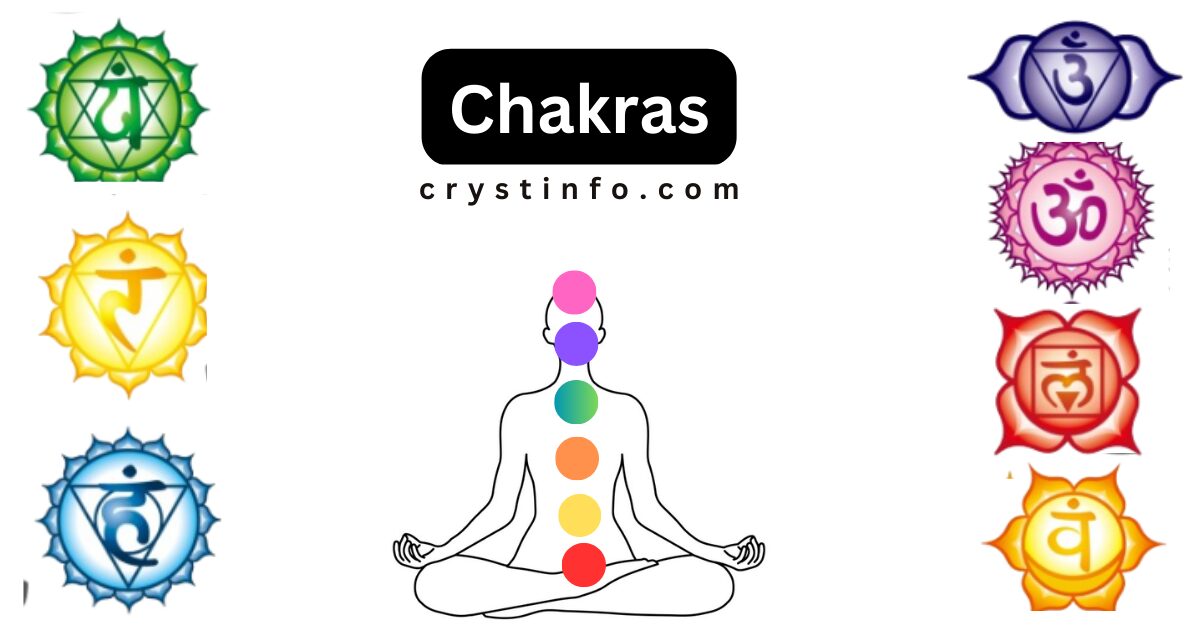
![Pink Crystal:Discover Healing Wonders,[45]Types and Benefits](https://crystinfo.com/wp-content/uploads/2023/12/Add-a-heading-20-768x402.jpg)
![Blue Agate: Meaning, Properties, and Benefits [Guide]](https://crystinfo.com/wp-content/uploads/2023/12/Add-a-heading-22-768x402.jpg)
![Snowflake Obsidian: Unleashing Healing Energies for Your [Well-being]](https://crystinfo.com/wp-content/uploads/2023/12/Add-a-heading-15-768x402.jpg)
![Blue Quartz: Healing Properties and Spiritual Significance [Guide]](https://crystinfo.com/wp-content/uploads/2023/12/Blue-Goldstone-2-768x402.jpg)
